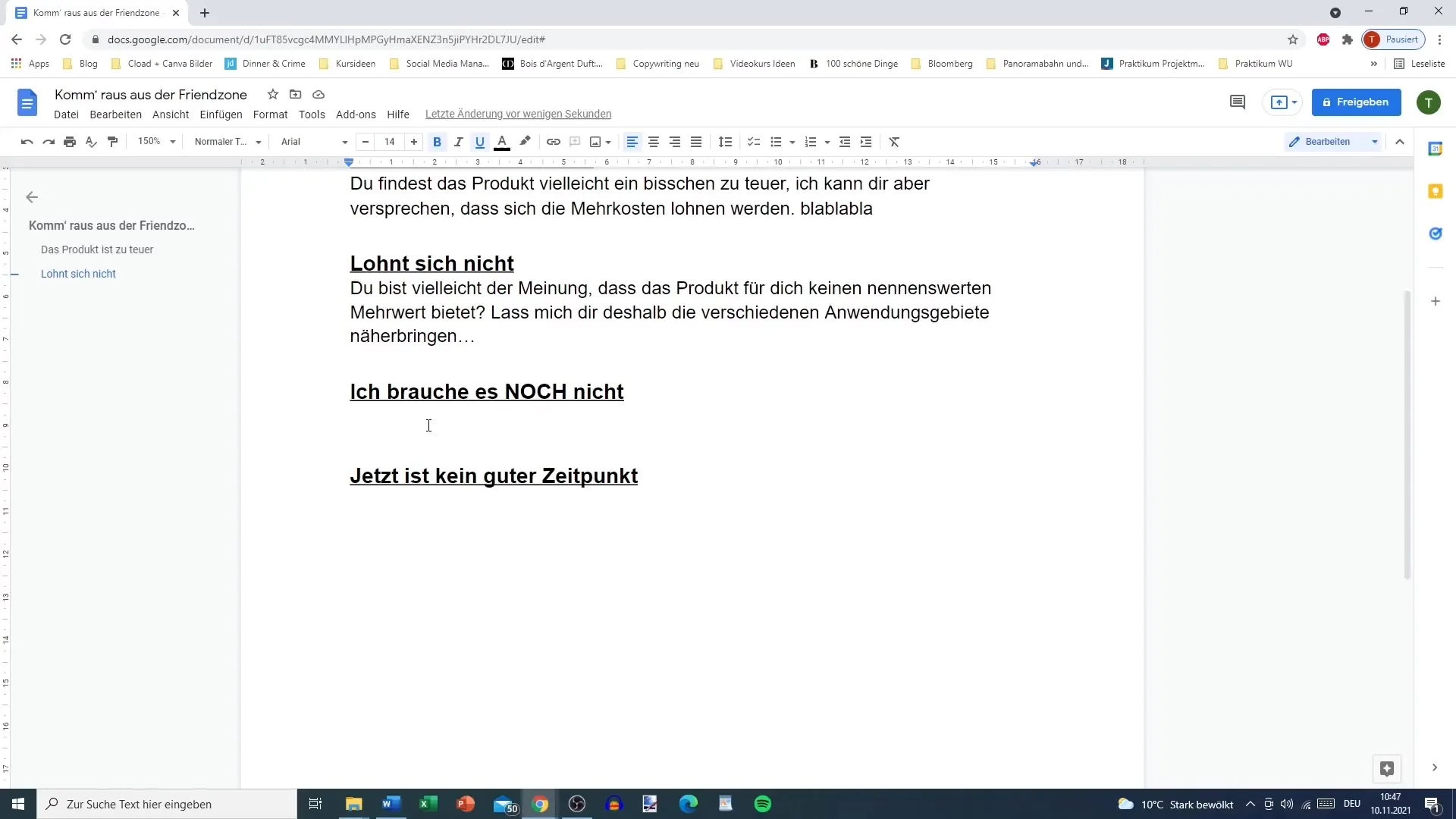You're stuck in the Friendzone and wondering how to reach the next level? This is a common dilemma, not just in interpersonal relationships, but also in the world of sales. Here, it's not just about the emotional aspect, but also about how you can use skillful copywriting to persuade people to transform acquaintance into a relationship – or, in this case, transform potential customers into buyers. This guide will show you how to effectively address objections and step out of the lurking Friendzone of sales.
Key Insights
- Understand the typical objections of your potential customers.
- Address these objections directly in your texts.
- Support your arguments with compelling examples.
- Write in-depth and seamlessly, if possible.
Step-by-Step Guide
Step 1: Identify the Objections
Every potential buyer has their own concerns. These concerns can be about price, necessity, or the right timing. To get out of the Friendzone, it's important to first identify these objections. Look at examples of why customers might hesitate to buy the product.

Step 2: Address the Objections
In the next step, you need to address the specific objection and clarify why it is unfounded. If a potential customer says, "The product is too expensive," you respond, "I can assure you that the extra costs will be worth it due to the quality and long-term benefits."
Step 3: Explain the Value
After addressing the concerns, it's up to you to make the value of your product clear. You should explain why the investment is worthwhile. Use concrete examples:
Step 4: Highlight the Unique Advantage
Compare your product to competitor offerings. If your product is more expensive, explain why this is justified. For example, you could explain that a more expensive camera has better features that ultimately save money or deliver better results.
Step 5: Address Temporal Objections
A common objection could be, "I don't need it yet." Here you need to be creative. You could argue that your product is cheaper in the summer and offers immediate benefits that are not possible in winter.
Step 6: Write in Detail
Write in detail about the objections to reinforce your arguments. Address any questions that may arise and familiarize yourself with the subject matter so that you are prepared for everything. A comprehensive discussion of each topic not only strengthens your argumentation but also demonstrates your expertise.
Step 7: Practice for Reinforcement
As a final exercise, you should work on the last points independently. Think about alternative objections and formulate responses based on them. This not only helps sharpen your own argumentation but also deepens the understanding of potential objections.

Summary
You now have the tools to identify the typical objections of your potential customers and respond to them effectively. By addressing these concerns, you can help yourself leave the Friendzone of sales and write effective, persuasive texts that encourage purchases.
Frequently Asked Questions
What are the most common objections in sales psychology?The most common objections often relate to price, necessity, and the right timing.
How can I best address these objections?By addressing them directly, explaining the value of your product, and providing compelling examples.
What is the advantage of detailed copywriting?It explains the products in detail and addresses potential concerns, which strengthens the trust of the readers.
How can I creatively structure my arguments?Use illustrative examples and compare with competitor products to underline the value of your offer.
How can I improve my copywriting skills?Practice makes perfect: Work regularly on new texts and practice formulating responses to possible objections.


